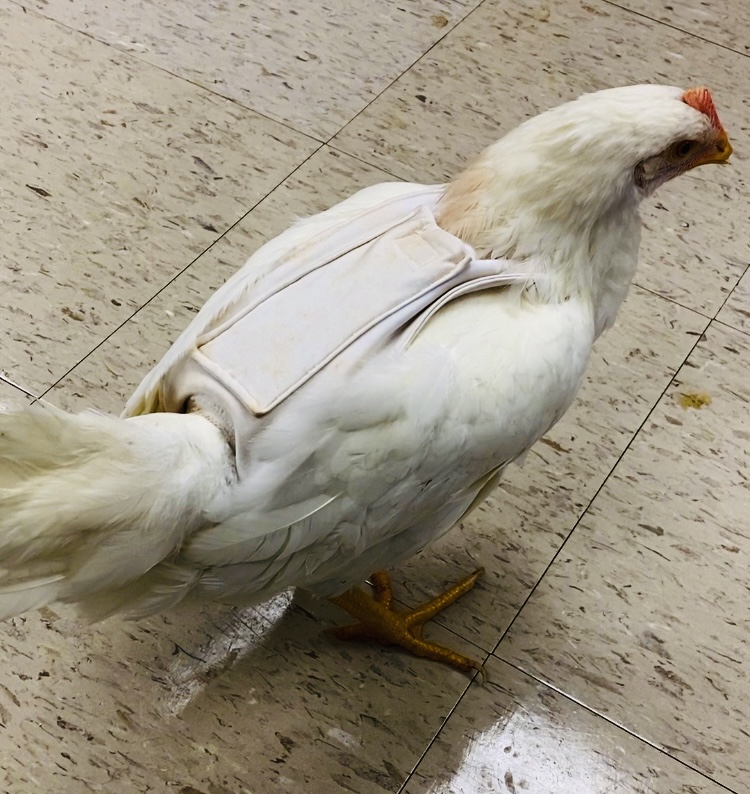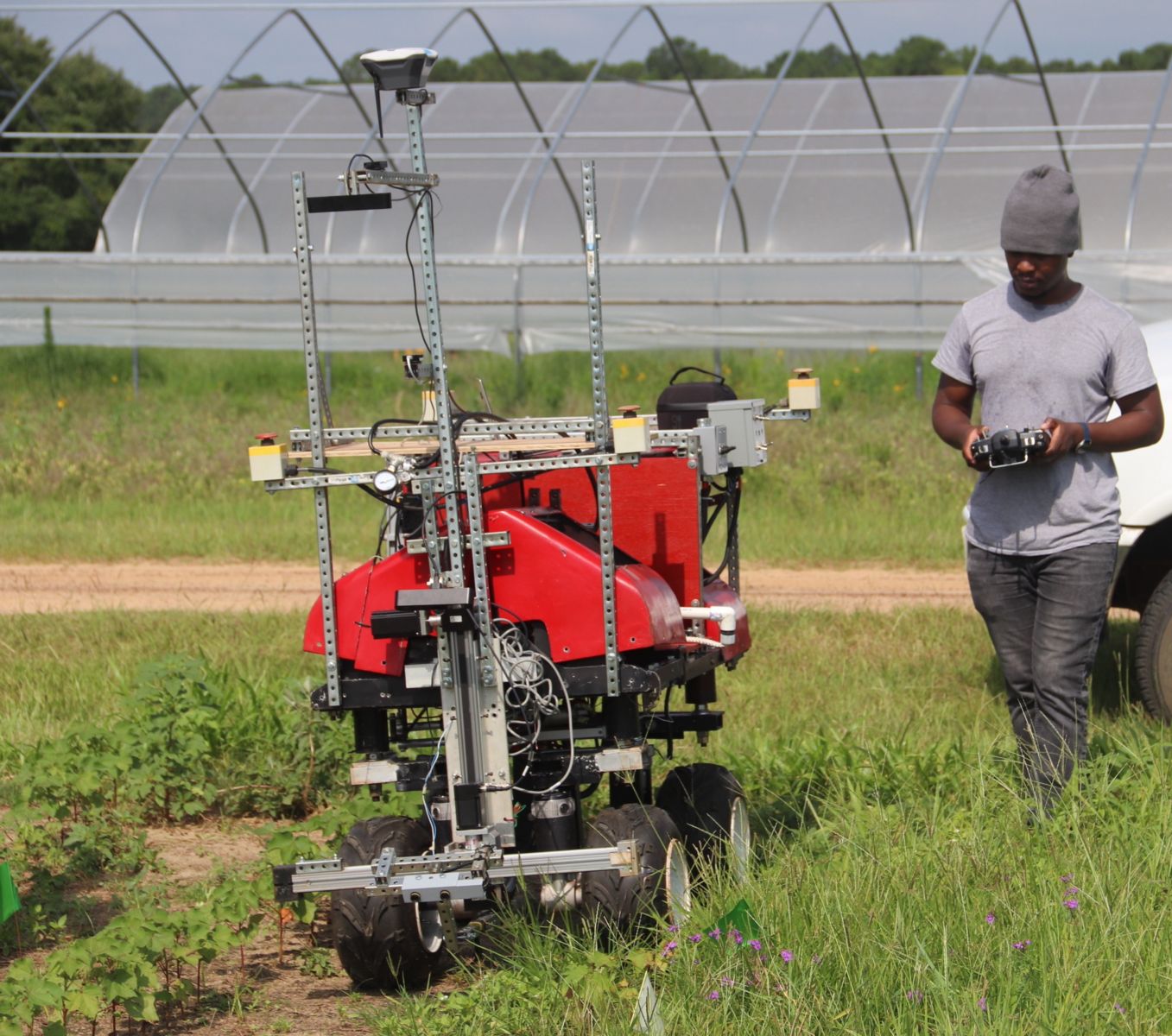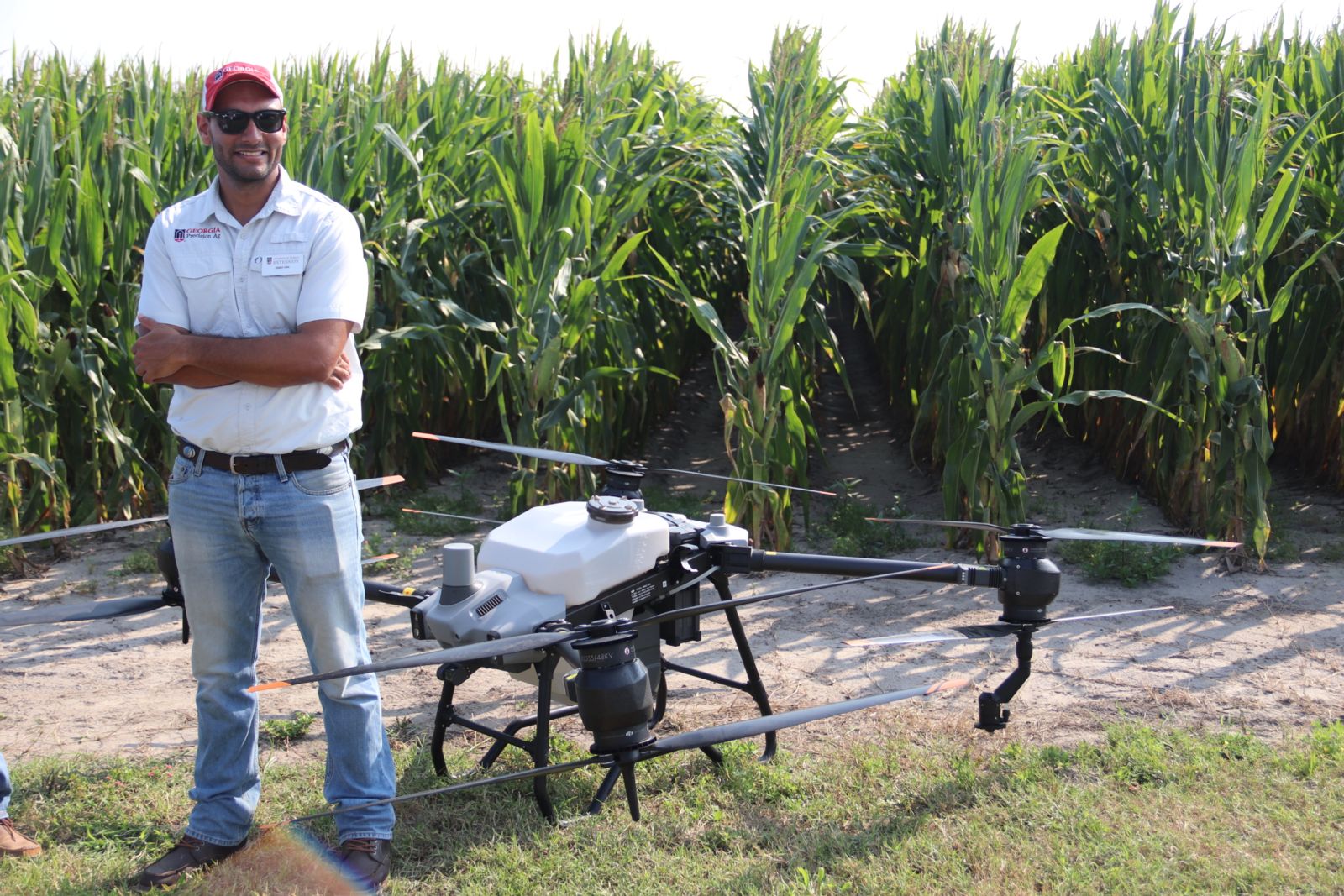test-blog
Precision agriculture increases farmers’ profitability
Posted on August 26, 2023 12:00 AM
By Jay Stone, Georgia Farm Bureau
To be profitable, farmers want the largest yield from the smallest possible collection of inputs. The hardest question any farmer must answer is “How?”
The answer, increasingly, is precision agriculture. University of Georgia Associate Professor of Crop & Soil Sciences Professor Wesley Porter, an Extension faculty member of the UGA Institute for Integrative Precision Agriculture, describes it as utilizing or applying technology to farm production practices to increase efficacy, efficiency and profitability.
Let’s look at how precision agriculture is already being used in livestock, row crop and fruit/vegetable production and what is being developed.
ROW CROPS
UGA PhD candidate Canicius Mwatta pilots Little Red Rover in a test plot of cotton at the UGA Tifton Campus. / Photo by Jay Stone
At the University of Georgia Tifton Campus, the agricultural engineering lab is home to ground drones researchers call “Little Red Rover” and “Big Red Rover.” Little Red Rover is slightly larger than most zero-turn lawn mowers. Big Red Rover is about the size of a medium-sized tractor.
Like most farm tractors, the two rovers can be outfitted with a variety of implements: weed trimmers or pullers, sprayers, imaging sensors and more. A key function is using the sensors – conventional and infrared cameras – as crop scouting tools. UGA professor and agricultural engineer Glen Rains said one possible use would be to have sensors interact with action-based attachments so when the sensors detect a pest or a weed, on-board sprayers or other tools can be set up to eliminate them. There are robotic laser weeders that manufacturers say can remove 200,000 weeds per hour.
The goal of using ground drones is to save farmers money. When Little Red Rover reaches market readiness, Rains said its projected cost is expected to range from $25,000 -$50,000.
For small farmers who cannot afford seven-figure prices for large farm equipment, Rains said the smaller rovers might provide a more affordable alternative.
“We’re working to make this scalable. So, a farmer might be able to get five or six of these and use them to do the same kinds of things,” Rains said.
This spring, Rains’ team was awarded a USDA National Institute for Food & Agriculture grant to develop a climate-smart “4-D” (Digital and Data-Driven Demonstration) farm to develop tools like the rovers.
Farmers have had access to airborne drones to scout their crops for several years. Mounted with various types of cameras, these drones can identify problem areas in a field by detecting crop stressors like lack of moisture or disease.
Drones with liquid reservoirs and spray nozzles that can aerially apply fertilizer and crop chemicals are already on the market.
Dr. Simer Virk at the UGA Tifton Campus said that for now, the spray drones are best used to augment farms’ conventional spraying and crop-dusting programs.
“You might have an area of a field that is close to power lines or fences that those [sprayers or planes] can’t reach,” Virk said. “The drone can go in and spot spray to get more complete coverage.”
UGA Professor Simer Virk with the Agras T40 drone, which carries a 30-liter tank. / Photo by Jay Stone
FRUITS & VEGETABLES
There are a variety of ways advanced technology is helping vegetable growers make the most of their resources, and many of them involve taking measurements.
At Lewis Taylor Farms (LTF), sensors are used to measure soil moisture, soil temperature, water quality, nutrient levels and pests. The farm uses computerized drip irrigation systems to direct water to plant root systems, helping the plants use water more efficiently and reduce water runoff.
Electronic sensors are used in the farm’s packing sheds to detect potential food safety issues. Sensors in the farm’s coolers keep temperatures constant to maximize shelf stability.
LTF Director of Food Safety and Purchasing Jessica Brim Kirk says the data generated by these sensors is vital to making management decisions, and she’s open to other technology that would make the farm more profitable.
Item No. 1 on her wish list: Lowering labor costs. The No. 1 obstacle: Replicating the performance of the human hand. Many of Georgia’s fruit and vegetable crops must be planted and harvested by skilled laborers.
“There currently is not a lot out there for in-field production: Things that we can use to help lower our costs of labor and help keep the same production levels in the field without damaging the product,” Kirk said.
Mechanical harvesting equipment has been in development since the 1970s, according to Brandon Wade of Alma Nursery and Berry Farms, but he says progress has been slow. Manufacturers have developed internal deflectors that reduce fruit bruising.
“There's still so much ground that can be made up in the area of mechanical harvesting,” Wade said. “I don't know what the perfect machine looks like. I just know there's got to be something that's better than what we've been doing.”
LIVESTOCK
Counting Chicken Feed
Chickens do not teach their young not to play with their food.
“They eat until they get full and then they play with the feed,” said Franklin County farmer Will Cabe.
Cabe and other poultry producers can use laser-activated machinery to sense when birds stop eating and start strewing food on the poultry house floor. The equipment then closes off the feeders, to prevent wasted feed.
Inside the poultry house, automation has been developed to make environmental controls more responsive. One system opens and closes ventilation slats depending on temperature; if the temperature reaches a certain level, fans pull air over cooling cells and through the house to reduce heat.
These tasks once required producers to physically go to a poultry house. Now, feed, ventilation and water supply can all be regulated remotely using smart phone apps.
UGA’s Poultry Science Department is using wearable and implantable devices to learn more about how chickens use space, in part responding to concerns about animal well-being.
“We just need to understand where they're moving, how they're moving and how that affects their caloric expenditure,” UGA Poultry Science Department Head Todd Applegate said.
Applegate likened the wearables to Fitbit devices worn by athletes.
UGA is also looking into the incorporation of variable speed exhaust fans to reduce electricity use and save producers money on their power bill.

This hen is wearing an accelerometer vest, which provides UGA researchers with data about its movements. / Photo courtesy of UGA Poultry Science Department.
Bullish on reproduction
For years, cattle producers have focused on genetics to raise animals that grow faster, generate greater carcass weight and taste better. To that end, some cattle producers have benefitted from transferring embryos since the mid-1980s, North Georgia veterinarian Dr. Todd Bickett said.
Embryonic transfer involves removing embryos seven days after insemination, evaluating them, and either transferring them to surrogate cows or freezing them for future use.
“We can take the more valuable animals and we can produce multiple offspring out of that more valuable individual,” Bickett said.
Bickett said while semen is routinely evaluated through computer analysis, embryos are typically evaluated by human visual appraisal, though computerized processes to grade embryos more efficiently are in development.
In the past five years, in vitro fertilization (IVF) has become more widely utilized, Bickett said.
IVF involves taking immature egg cells from a cow’s ovaries, evaluating them, then inseminating and culturing them in a lab. These embryos are transferred to cows the same way as conventional embryonic transfer.
Bickett said IVF is not yet as reliable as embryo transfer in terms of matching conception and pregnancy rates.
“If they can find a way to minimize that gap, it would certainly be beneficial,” Bickett said.

